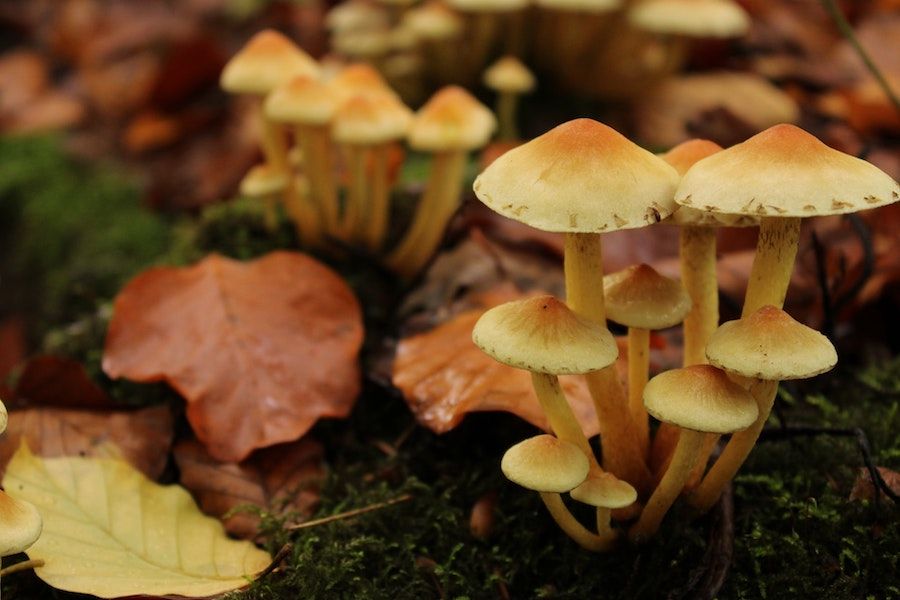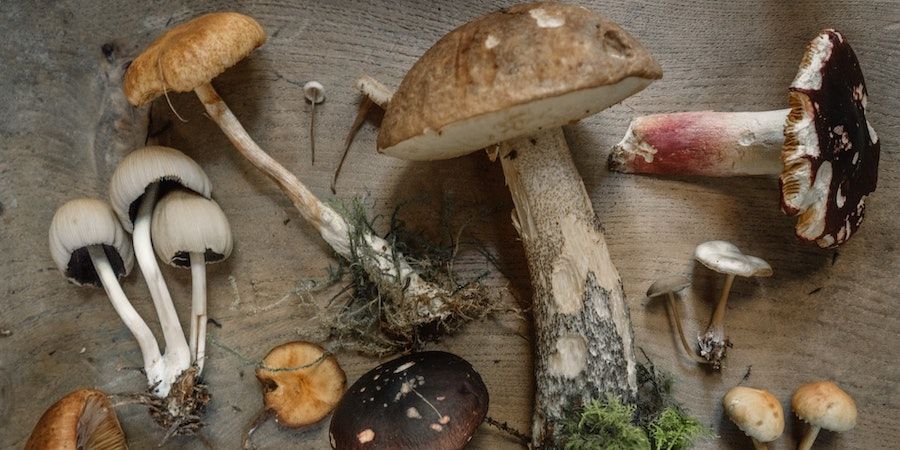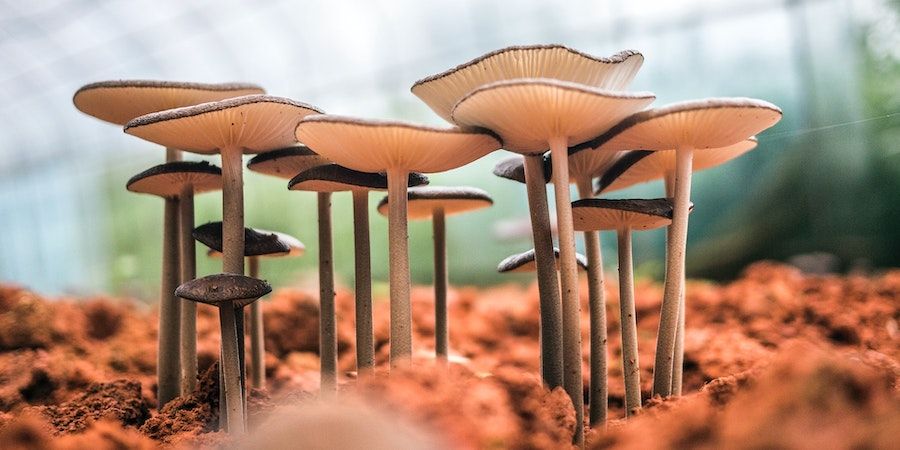Mushrooms are without doubt very tasty. Exotic mushrooms might be very expensive, and it's sometimes difficult to find them in supermarkets. So why not take the fungi into your home and grow them on your own? It's fun and easy if you follow the guidelines, and they look cool when they start fruiting.
The mini-greenhouses and one grow tent below will help you in your mushroom cultivation journey. Although they're mostly designed for seedlings, they all have removable seed trays, so you can make space for mushroom substrate instead. Besides the grow tent, all of these greenhouses will have to be protected from light in the spawning phase of your mushroom cultivation.
|
PRODUCT |
FEATURES |
||
|---|---|---|---|
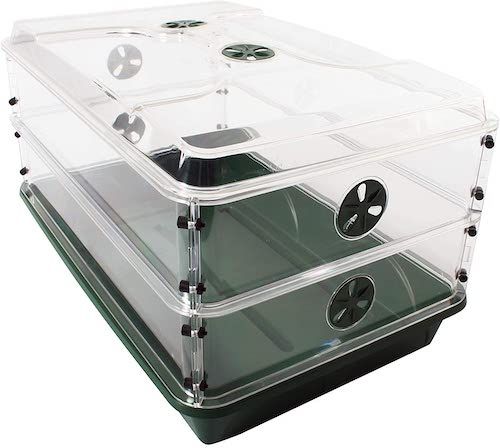
|
|
||
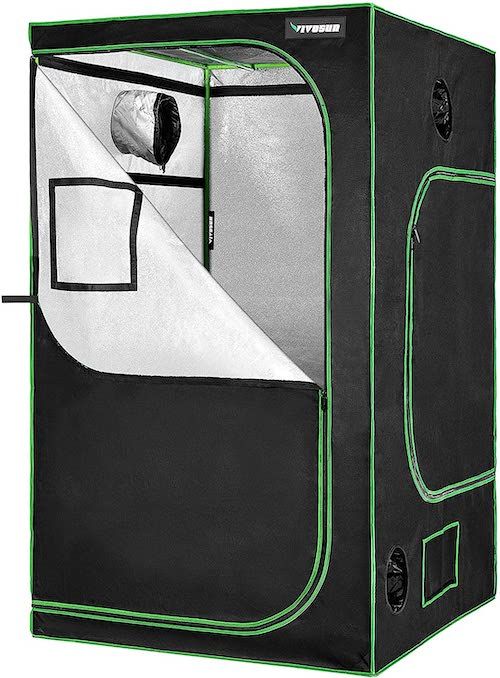
|
|
||
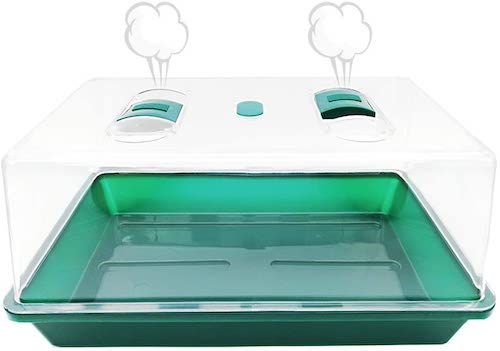
|
|
||
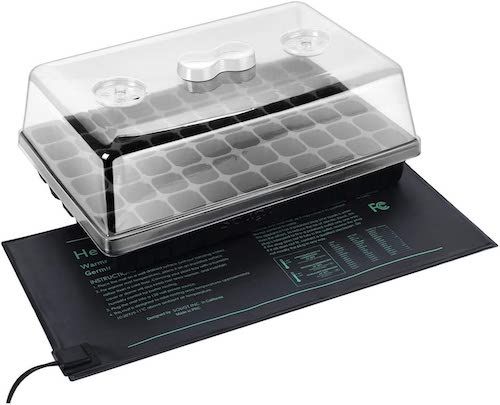
|
|
||
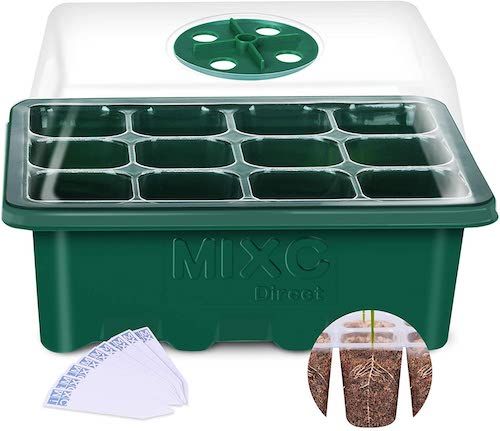
|
|
Why You Can Trust Us
We've already written about the best indoor greenhouse, the best grow tent, and the ideal temperature and humidity for your grow tent. It was only a matter of time before we tackled the best greenhouse for mushrooms list.
The first time I tried to grow mushrooms, it was a disaster. I didn't have a greenhouse, I had an old ice cream tub that I loaded up with substrate and injected some spores into. Needless to say, it didn't work. Within a few days, the substrate was covered in green mold. Not a good sign. Throw it away. Try again.
After some trial and error, I finally learned the importance of having actual equipment to do it right. And that's exactly what's included in the list below; equipment that will get the job done. Mushrooms don't ask for much, but they're very specific about what they ask for. The products below will respond to their needs, so start planning what you're going to do with your huge mushroom harvest after you've read our guide.
Best For Lion's Mane
This mini greenhouse is not only vented, the height is extendable too. So tall mushrooms will have the space they need to reach maturity
- Extendable lid
- Sturdy bottom tray
- Extenders not sold separately
- Common problem with missing pieces upon delivery"
|
|
Why We Like It: Sturdy, controllable, and extendable. The bottom tray is made out of a heavy gauge PP material which means you can carry the fully stacked tray without bending or buckling it. The vented lid gives you control over the internal climate. There are vented lid extenders sold separately, so you can have a higher lid for those extra tall mushrooms you plan on cultivating.
Who Should Buy It: If you're planning on growing some tall mushrooms, the height extenders of this unit will make sure you don't run out of vertical space.
Best For Oyster Mushrooms
This grow tent is serious about climate control. The lightproof construction gives you total control over the light that your mushrooms receive. You'll also enjoy humidity and temperature control thanks to the built in vent
- Lightproof
- Easy observation windows
- Light sealed zippers
- Large
- Tent will collapse if not erected properly
- Material quality seems to have dropped after switching manufacturer"
|
|
Why We Like It: The Vivosun keeps things simple. It's a lightproof box, so you have full control around what light shines out from, or into, the grow tent. During the spawning phase, you can keep your mushrooms in the dark. When they start fruiting, you can let some light in by unzipping one side. You can also install a light inside the tent for maximum control.
The reflective material keeps all the light reflecting where you need it. The lightproof zippers keep light in, and a convenient viewing window makes it easy to check on your mushrooms. Even the ventilation fan is sealed tight by an inner layer, so the climate inside this tent will be under your control.
Who Should Buy It: If you're looking for a grow tent that gives you full control of the internal climate, this product should be perfect for you.
Best For Morel Mushrooms
This sturdy, vented propagator is just waiting for your mushrooms. The large capacity and thick plastic promises space for large yields
- Sturdy construction
- Two vents for humidity control
- Common problem with product arriving broken
- No instructions. Although putting it together should be self explanatory"
|
|
Why We Like It: This mini greenhouse gives you complete control of the conditions within it. The humidity control vents mean that you can adjust the temperature and humidity inside the greenhouse with ease. It keeps the conditions warm and humid, and the clear top allows you to have an eye for what's going on inside. Keep in mind that this will have to be kept in a dark corner for your mushrooms to thrive.
Who Should Buy It: This compact greenhouse is great if you're short on space, but want to grow your own mushrooms. It would easily fit inside a dark cupboard, not stealing precious space from your room.
Best For Cold Climates
This vented mini greenhouse comes with two heating mats. Meaning 'it's too cold' is no excuse to not grow mushrooms at home
- Heating mats included
- Solid bottom tray construction
- Heating pads temperamental
- Design means moisture runs onto heating pad"
|
|
Why We Like It: This kit has almost everything you need. The sturdy tray has a vented dome lid for humidity and temperature control. When it gets too cold for your mushrooms, there's a heat mat included to keep your fungi comfortable. It will make sure your mushrooms are always warm and happy. The seedling tray is removable if you need more space for your mushroom's substrate.
Who Should Buy It: If you're interested in cultivating mushrooms, but you think it might be too cold to grow them where you live, this product is the best solution.
Best For Larger Operations
With extra space for your mushroom substrate in the deep tray, this product will make it easy for you to keep your mushrooms healthy and happy
- Deep tray
- Compatible with heat mats
- Cheap
- A change of manufacturers has affected quality
- Sometimes the lid doesn't fit"
|
|
Why We Like It: The deep bottom tray has plenty of space for your mushroom's substrate and water. Other standard features include a vented lid for humidity and temperature control, and it's suitable for use on a heat mat during cold days. This is a 10-pack, so you'll have plenty of space. Also, 4.5 stars from over 4,000 reviews, allows thinking that it's worth giving a try.
Who Should Buy It: If you don't have enough room for your substrate in other mushroom greenhouses, consider this one with its deep tray. You may also get a free heat mat if you follow the instructions after scanning the QR code on the packaging.
What Conditions Are Needed for a Mushroom to Grow?
As most of us know, mushrooms are fungi. While you may think that fungi are hardy organisms that are hard to kill, this isn't entirely true when it comes to cultivating them. Let's take a closer look at what conditions mushrooms need to grow healthily.
Light
While a small amount of light won't necessarily hurt your mushrooms, they prefer to grow in the dark. This is because mushrooms are different from plants in where they get their nutrients from. While plants use photosynthesis to get their nutrients, mushrooms pull their nutrients from the substrate on which they're grown. That's why mushrooms don't need light and prefer dark conditions to grow optimally.
Humidity
Mushrooms like humidity. Using a mister to spritz your growing mushroom stash a few times a day will make sure that your grow house remains humid enough for your mushrooms to thrive. The fungi pull water out of the air to stop themselves from drying out and shriveling up. That's why it's crucial to keep them humid, so they have perfect conditions to grow.
Substrate
The main food source for your mushrooms is carbon. This means that your substrate needs to be made of carbon-rich material. That's why most substrates are made of woody, fibrous materials such as coco coir, straw, or even whole logs. The quality and type of your substrate will determine if you need to add any supplements to your system or not. Therefore it's recommended to get information about the substrates before using them.
It's also wise to remember that you need to sterilize your chosen substrate before you introduce your mushroom spores. This ensures that your mushrooms don't have any competition when attempting to colonize their substrate.
Some common mushroom substrates include:
- Coco coir and vermiculite blend
- Straw
- Coffee grounds
- Cardboard
- Hardwood pellets
- Logs
Temperature
To give your mushrooms the best chance of a healthy life, you need to keep the temperatures in the grow house stable. Somewhere between 55 and 60 degrees Fahrenheit should be suitable. A lot of climate control systems use fans to move air around the space, so make sure that there aren't any strong drafts blowing directly onto your mushrooms. This can quickly and easily kill your mushrooms before they even have a chance to thrive.
Do Fungi and Mushrooms Need Sunlight?
Fungi and mushrooms don't contain chlorophyll, which means that they don't need sunlight to grow. In fact, mushrooms need near darkness to spawn, but a small amount of light won't hurt. They need light for successful fruiting, so a small amount of it is advised. Once your mushrooms are in the fruiting stage as the ones in the picture below, a small lamp or even indirect sunlight for a few hours a day will suffice.
How We Picked
After we brushed up on the optimum conditions for mushroom growth, we chose the following features to determine how we picked the best mushroom greenhouses available today.
- Vents: Having a vented greenhouse means you have control over the temperature and humidity inside your greenhouse. It's crucial for a healthy mushroom harvest.
- Light blocking: While most of the greenhouses on this list are not lightproof, we made sure to add at least one lightproof product that you can use on its own, or in combination with a vented mini greenhouse.
- Price: Accessibility is important. That's why we included products that would fit a range of budgets, so more people could benefit from them.
And The Winner Is...
With its extendable vented dome top and solid craftsmanship, the EarlyGrow Vented Propagator is a perfect choice for us. The fact that you can choose a higher lid while still maintaining the vent features means that you can grow all sorts of types of mushrooms in this affordable mini greenhouse.
Remember that during the spawning phase, you'll have to put your substrate in a dark place, and depending on which species you're cultivating, they might need a bit of light during the fruiting phase. Be sure to read up on your mushroom species before cultivation to avoid any further complications.

